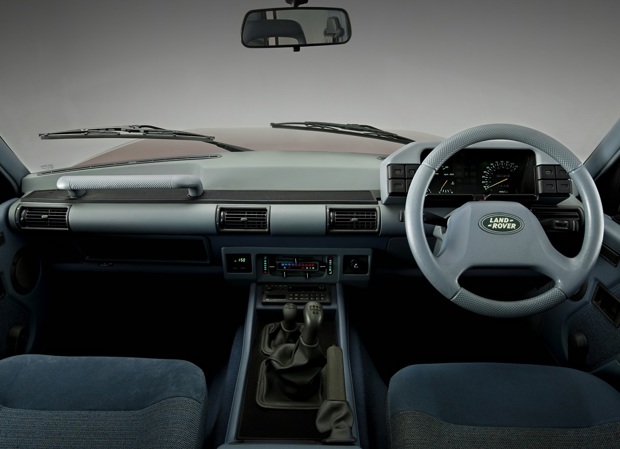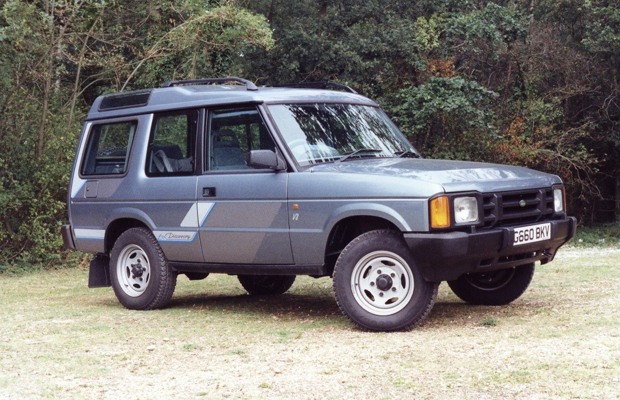Future Classic Friday: Land Rover Discovery

British Leyland, Austin Rover, Rover Group - call it what you will - but for all its many failings, the company was nothing if not resourceful.
The Land Rover Discovery was arguably its greatest success, though even Land Rover's own bosses weren't quite prepared for how much the model would fire the imagination of the car buying public.
Up until the 'Disco' made its debut, Land Rover relied on two models with very different characters. The 90/110 (which didn't become the Defender until after the Discovery was launched) and the Range Rover, which had evolved from a semi-luxurious 4x4 to a really quite posh one. But there was no middle ground.
And that, to Land Rover, was a massive threat, because it was an area rapidly filling up with Japanese newcomers. If Land Rover was to continue to rule the 4x4 roost, it needed to compete with vehicles such as the Mitsubishi Shogun, Toyota Land Cruiser and Daihatsu Fourtrak. And it needed to do so quickly.
But, as ever, Rover Group's coffers were empty. What money British Aerospace had made available for product development had been sunk into the new 'R8' hatchback that became the Rover 200, it's four-door sibling, the 400, the new 'K-series' engine. There were also significant facelifts for the Metro and Rover 800, without which the company was staring down the barrel of a gun.
Land Rover did get a new engine out of the investment - and it was a cracker, too. Indeed, even today, Land Rover die-hards claim that the 200 Tdi was the best engine the company ever made.
Clattery, maybe, but torquey and doggedly reliable. But it was also told to make do and mend, using whatever parts it could from the Rover Group parts bin.

As well as the limited investment, this was also a ploy to reduce development time so as to minimise the impact of the new models on the market, light trucks from the Far East, which coined the phrase 'Sports Utility Vehicle', or SUV.
As a result, the Discovery was based on the chassis of the Range Rover. It used its floors, most of its drivetrain, door frames and glass. Elsewhere from the parts bin came the headlights from the Freight Rover van, along with the tail light clusters from the Maestro van.
Much of the switchgear was shared with the Metro and Rover 800, while the door handles were a throwback to the Austin Allegro and Morris Marina.
Where Land Rover did invest, though, was in the Discovery's cabin, appointing fashion designer Jasper Conran's agency to create the interior.
Initially only available in blue, the plastics had a dimpled finish to the steering wheel and distinctive seat-mounted grab handles, while behind the gear lever the Discovery had a removable fabric cubby box.
The interior layout was dubbed 'theatre-style', meaning that those in the second row sat higher than those in the front, a feature that gave the model its distinctive stepped roofline.
Launched in 1989 as a three-door only, it was an overnight success. A more family-friendly five-door model arrived in 1991, followed by a significant facelift and new, quieter 300Tdi engines in 1994.
Even the 1999 Discovery Td5, which had a far more conventional cabin and innovative technology such as ACE, or Advanced Cornering Enhancement, was based on primarily the same vehicle. By then Land Rover's fortunes had really started to turn. It may have been based on a 30-year old chassis, but by now the Land Rover Discovery was a genuine premium vehicle.
Today, Discovery is not just a nameplate, but a model range of its own within the modern Land Rover line-up. And while the current incarnation may have very little in common with its ancestor in terms of styling, it has it to thank for everything the Discovery name has come to stand for - not least for keeping Land Rover in the game to start with.
A flawed car in many ways, yes, but the Land Rover Discovery is a sure-fire classic in waiting without a doubt. Find a classic Land Rover for sale.


